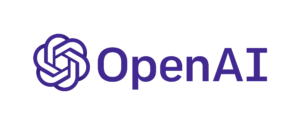Deep learning is a subset of machine learning that focuses on neural networks with multiple layers, also known as deep neural networks. The term “deep” refers to the depth of the network, meaning the number of layers through which the data is transformed. Deep learning has gained significant attention and popularity due to its ability to automatically learn hierarchical representations of data, allowing it to capture intricate patterns and features.
Key characteristics of deep learning include:
- Neural Networks: Deep learning models are typically built using artificial neural networks, which are inspired by the structure and function of the human brain. These networks consist of interconnected nodes, or artificial neurons, organized into layers. Each connection between nodes has an associated weight that is adjusted during the training process.
- Deep Neural Networks: Deep learning models have multiple layers, including an input layer, one or more hidden layers, and an output layer. The hidden layers enable the network to learn complex representations of the input data through the hierarchical extraction of features.
- Feature Learning: Deep learning excels at automatically learning hierarchical features from raw data. Each layer of the network extracts increasingly abstract and complex features, allowing the model to capture intricate patterns in the input data.
- Representation Learning: Deep learning models learn to automatically represent data in a way that facilitates effective learning. This process of representation learning enables the network to understand and recognize features in the data without explicit programming.
- End-to-End Learning: Deep learning models are designed to learn end-to-end mappings from raw input to output, eliminating the need for manual feature engineering in many cases. This makes them well-suited for tasks such as image and speech recognition, natural language processing, and other complex tasks.
Common architectures within deep learning include Convolutional Neural Networks (CNNs) for image processing, Recurrent Neural Networks (RNNs) for sequence data, and Transformer models for natural language processing tasks. Deep learning has achieved remarkable success in various domains, such as image and speech recognition, language translation, autonomous vehicles, healthcare, and more.
It’s important to note that the success of deep learning is often contingent on the availability of large amounts of labeled data for training, as well as considerable computational resources for training complex models. Advances in hardware, such as Graphics Processing Units (GPUs) and specialized hardware like TPUs (Tensor Processing Units), have played a crucial role in the scalability and efficiency of deep learning algorithms.
You








